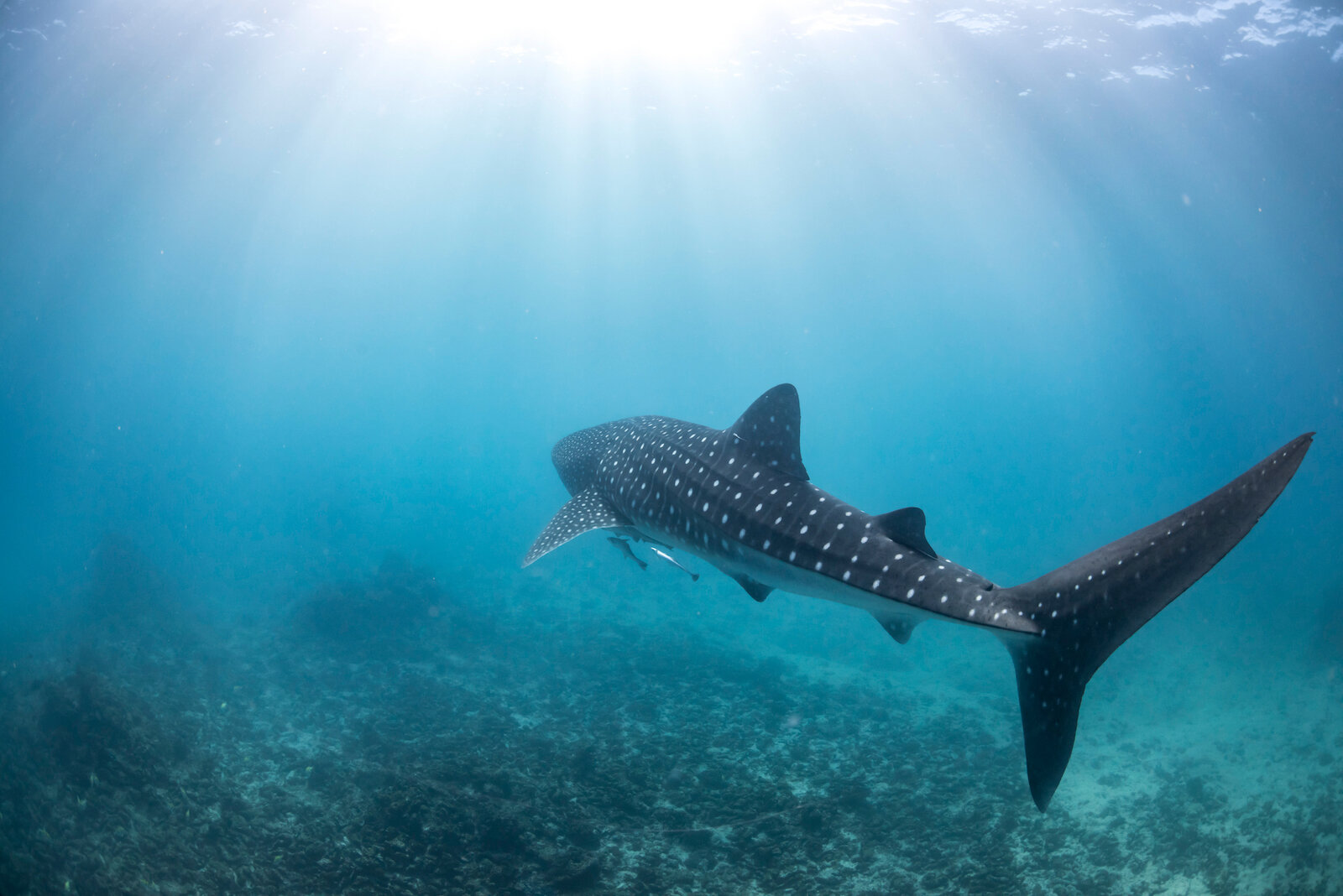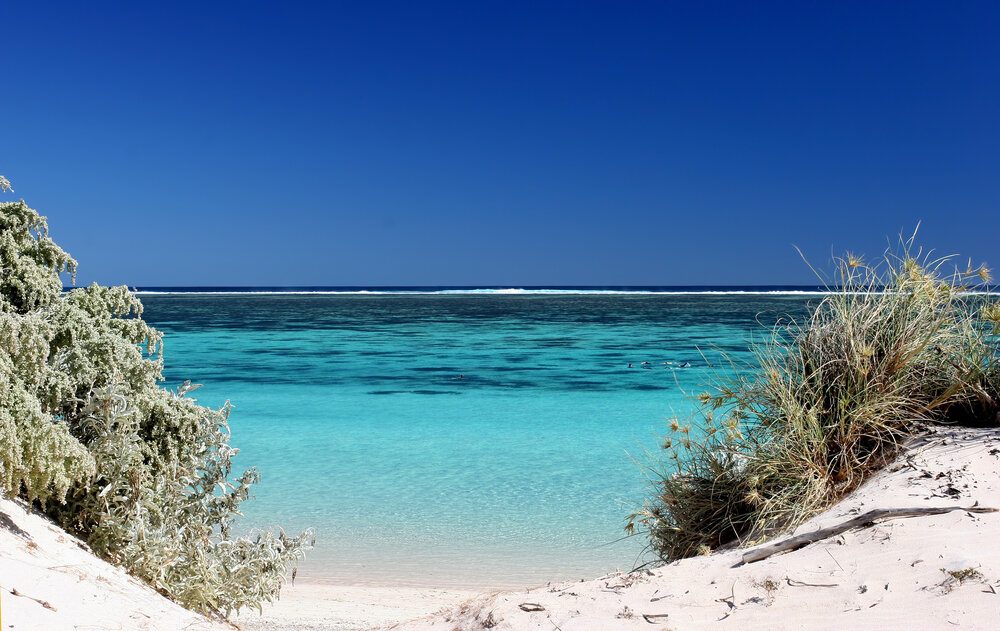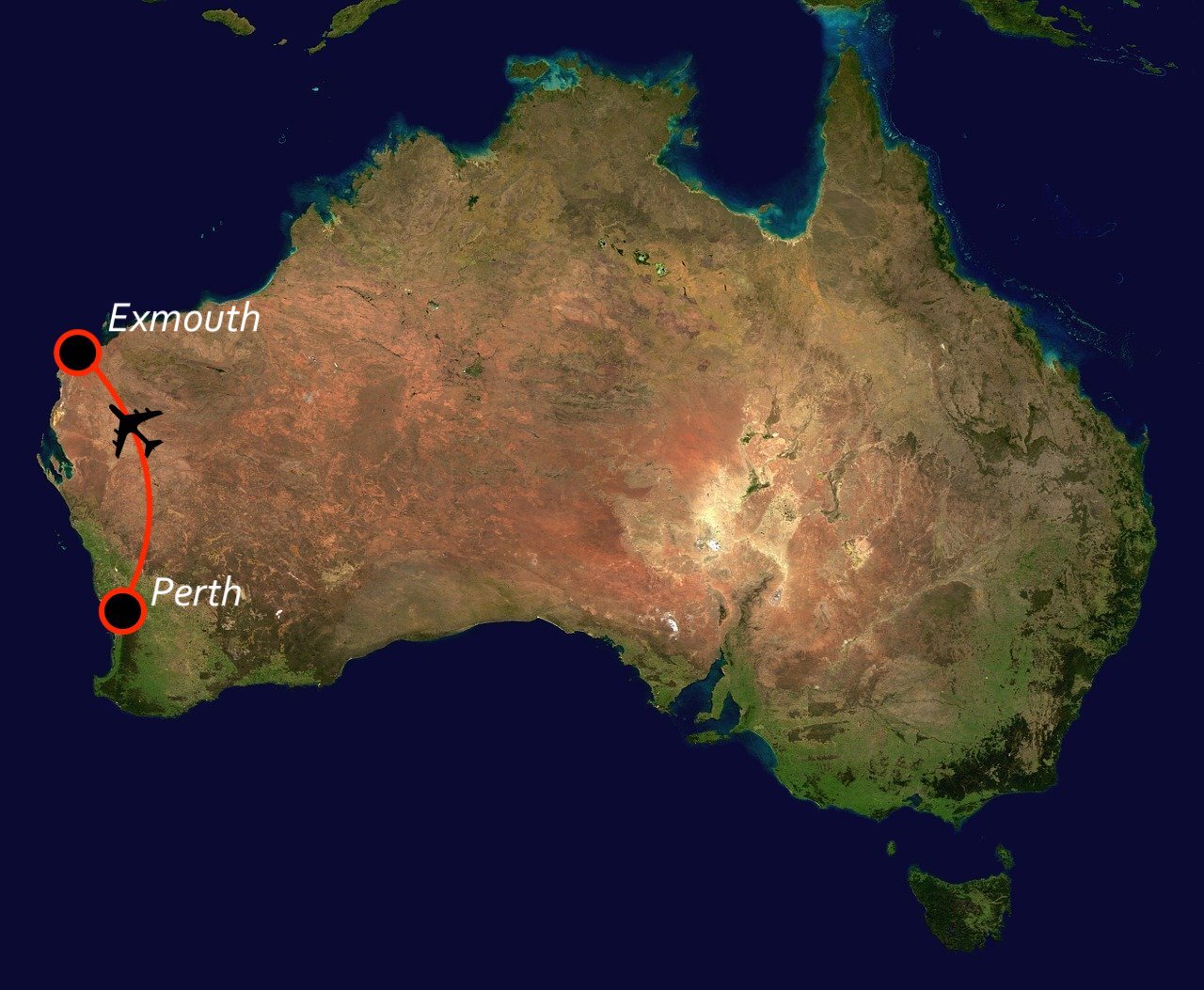
Ningaloo Reef:
Ultimate Guide for Divers & Snorkelers

The unknown jewel of the Australian coast, discover an underwater world teeming with life and opportunities for adventure. Ningaloo Reef is the perfect destination for snorkelers and divers.
What is Ningaloo Reef?
The Ningaloo Coast is a World Heritage Site famed for its natural beauty and unspoilt habitats. It is also home to Ningaloo Reef. Regarded as one of the largest remaining untouched coral paradise on the planet, Ningaloo Reef offers a rare view into a world so often disrupted by humanity.
Where is Ningaloo Reef?
Ningaloo Reef is found on the north-western coast of Australia. The closest major city is Perth, Australia, which is around 750 miles away - which equates to around 13 hours by car or just under 2 hours by plane. The location of Ningaloo Reef is quite remote and it takes a small but noticeable amount of effort to reach. It’s this nature that means Ningaloo Reef remains one of the last great oases for wildlife gathering around coastal waters anywhere in the world.

Why Visit Ningaloo Reef?
Ningaloo Reef is the world’s largest fringing reef, which means it’s a reef found directly off the coast. You can literally swim out from the beach to the reef. A 162 mile-long stretch of glorious coral, Ningaloo Reef is one of the most vibrant coral reefs in the world. A hive of biodiversity and life, Ningaloo Reef is also home to some of the largest gatherings of megafauna (large animals) anywhere on the planet.
When to Visit Ningaloo Reef
There is nothing seasonal about Ningaloo Reef, it’s a year-round paradise. Visit in any month and the corals will be just as vibrant as any other, and the waters just as abundant with life.
March to October is when Ningaloo Reef experiences the best weather and water conditions, although it’s worth noting the Australian holiday seasons of April and July can make this area very busy. If possible, visit outside of these holiday dates. Be aware that temperatures can really spike during the Australian summer, November to February, so keep that in mind if heat is a concern.
If you’re visiting for encounters with megafauna, like manta rays, whale sharks and humpback whales, you’ll want to visit between June and September.

Best Snorkel and Diving Experiences of Ningaloo Reef
While some visit the Ningaloo Coast for the stunning beaches and warm climate, most are drawn here for the experiences available beneath the surface of the water. Ningaloo Reef is the biggest attraction to the local area, and for good reason. These are the wildlife experiences you can have while snorkelling and diving on Ningaloo Reef:

Whale Shark
Ningaloo Reef is one of the best places in the world to swim with whale sharks. From March to September, hundreds of whale sharks gather across Ningaloo Reef to feed.

Humpback Whales
Australia recently allowed for the licensing of select tour guides to take swimmers out to come face to face with humpback whales on Ningaloo Reef. Humpbacks congregate along Ningaloo Reef in high numbers between July and October.

Sharks
Ningaloo Reef is infested with sharks, but in a good way! There are thousands of gorgeous and docile reef sharks and hammerhead sharks swimming across the reef. You’ll also find larger tiger sharks here, which are a big draw factor for thrill-seeking divers in particular. Worried about safety while visiting Ningaloo Reef? Keep reading.

Sea Turtles
Many sea turtles, from loggerhead to green turtles, live on Ningaloo Reef. Hatching season occurs between December and March every year, but you can dive and snorkel year-round with high chances of meeting one of the over 6000 resident turtles.

Manta Rays
Ningaloo Reef is considered one of the top places on the planet to swim with manta rays. Present year-round, your best chances are between June and September, where they turn out in high numbers to feed alongside whale sharks.

Dugong
Dubbed the sea cow, Dugongs are a relative of the manatee and spend their time feeding on seagrass at the bottom of Ningaloo Reef. While a rare sighting, there is still a chance you’ll encounter these animals while visiting Ningaloo.

Dolphin
Being a hotspot of life with an abundance of food available, it would be absurd to assume that dolphins didn’t thrive across Ningaloo Reef. Here in their thousands, dolphins are year-round residents, hunting and thriving in the rich waters of Ningaloo.

Fish
While large and exotic animals are often the biggest pull to Ningaloo Reef, we can’t ignore the vibrant, colourful and most numerous of residents. Over 500 species of fish call Ningaloo Reef home, from giant grouper to tiny clownfish.

Coral Reefs
It’s easy to get swept up by the incredible fish and marine mammals of Ningaloo Reef, but we shouldn’t forget about the bright and exotic coral that makes Ningaloo one of the most exciting reefs in the world to visit. The corals of Ningaloo Reef are breathtaking. Travel during the right time in March and April and you might also witness the famous coral spawn.
Is Ningaloo Safe?
Ningaloo Reef is a very safe part of the Australian coastline to visit. Yes, there are large predators like tiger sharks, but there have been no fatal incidents recorded in modern history, and many people actually visit Ningaloo Reef specifically to dive with these animals. Great white sharks, often feared in Australia and responsible for the vast majority of fatal encounters, are not present here due to the warm tropical waters. Jellyfish can be found around Ningaloo Reef, but are rarely seen in numbers that could cause concern. There are also slight currents that may be difficult for weak swimmers, but these currents pose little problem for anyone with a bit of confidence with the water.
The greatest risk posed to travellers to Ningaloo Reef is a lack of experience in open water. Make sure you have the appropriate equipment for diving and snorkelling. If you’re not confident in your swimming skills, you should visit with expert tour guides, and be careful not to overstep your own boundaries. The biggest threat you’ll face out in Ningaloo Reef is you. Respect the ocean, understand your own limitations, and you’ll have a very safe and enjoyable experience.

How to Get to Ningaloo Reef
Access to Ningaloo Reef is available all along the 162-mile stretch of coral that wraps its way around Western Australia. For travellers visiting Ningaloo Reef, the best option is flying from Perth to Exmouth and making your way to your accommodation from there. Perth is a very well connected airport, with flights available to numerous international destinations. Exmouth, however, is only suitable for internal flights, so you’ll have no luck trying to reach Ningaloo Reef directly. Fortunately, it’s only around 1 hour 45 minutes to fly from Perth to Exmouth.


